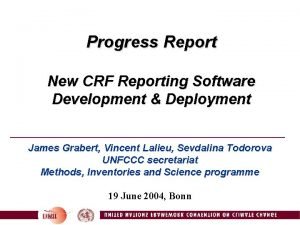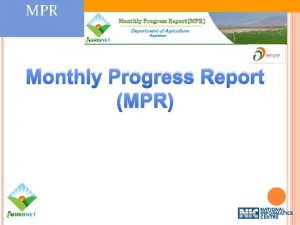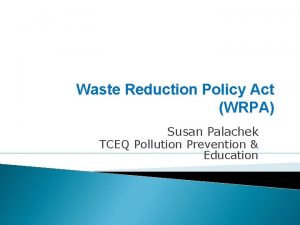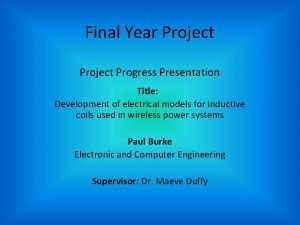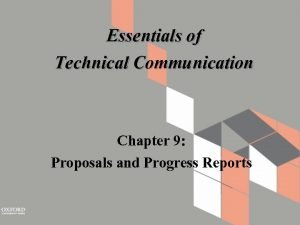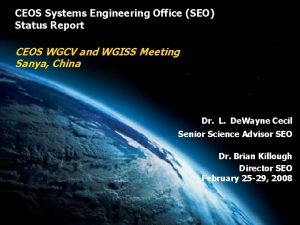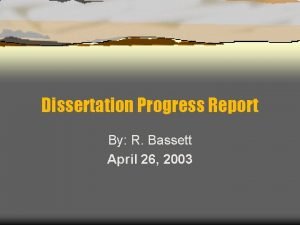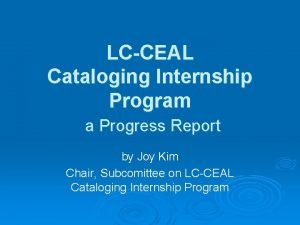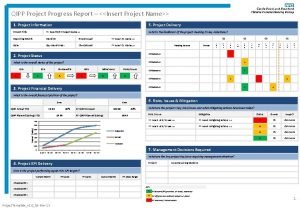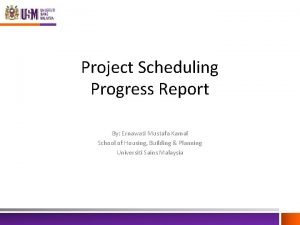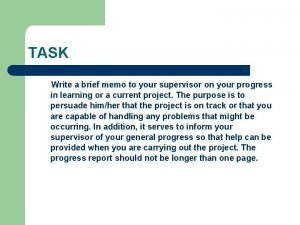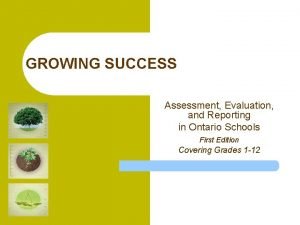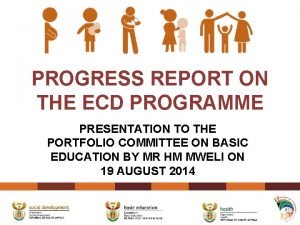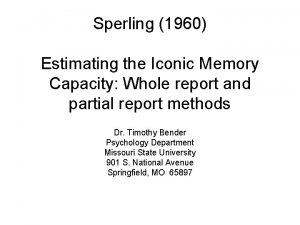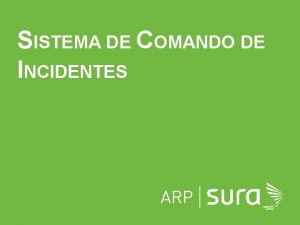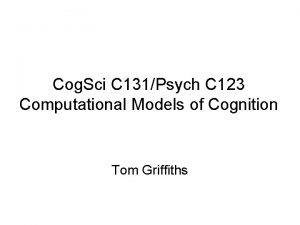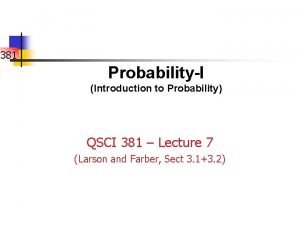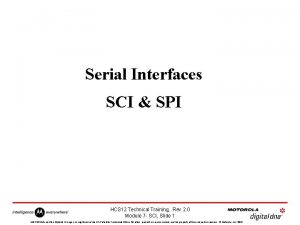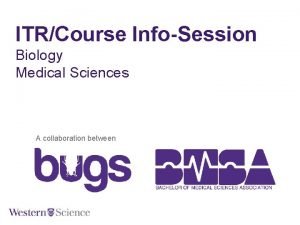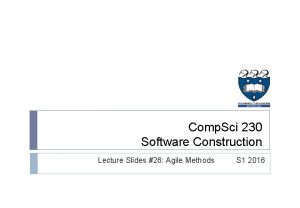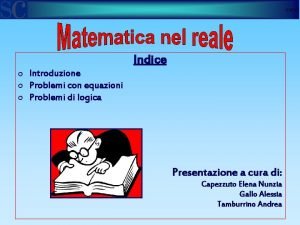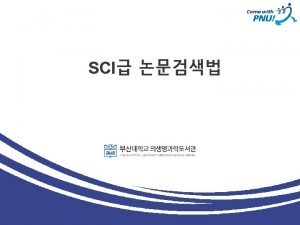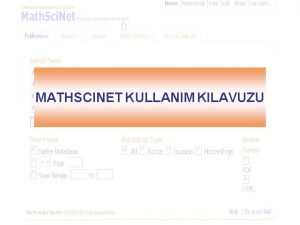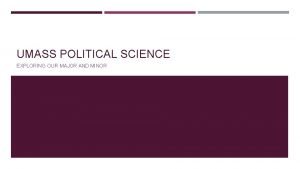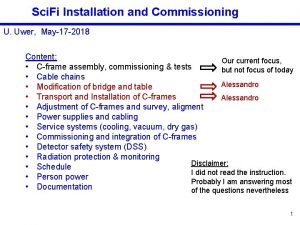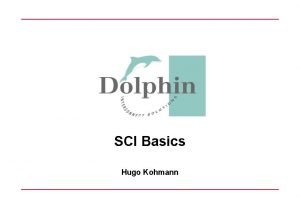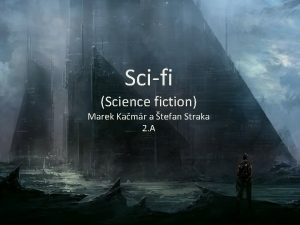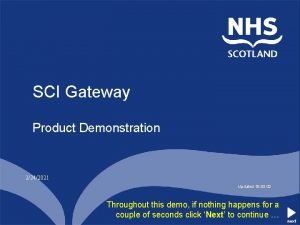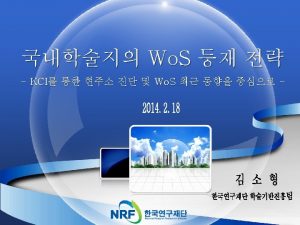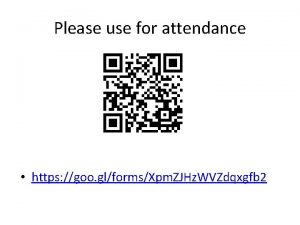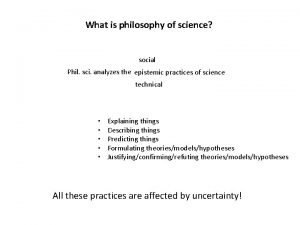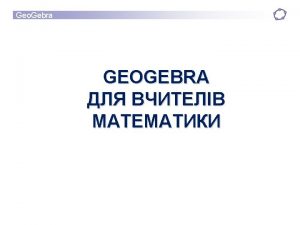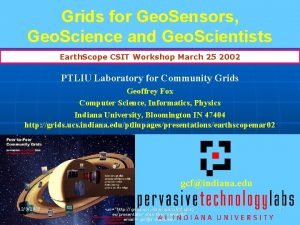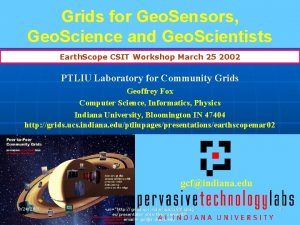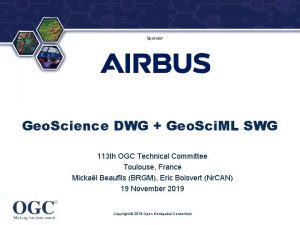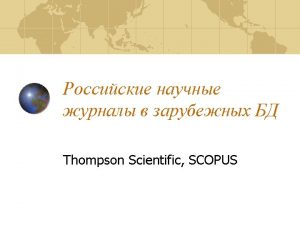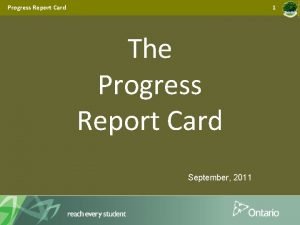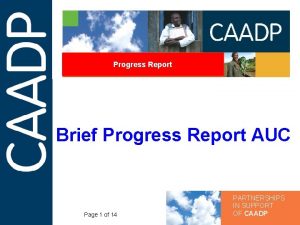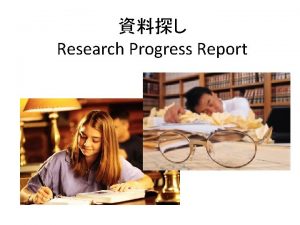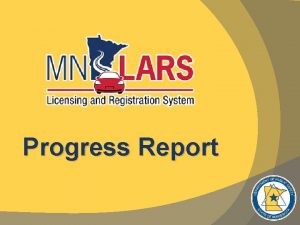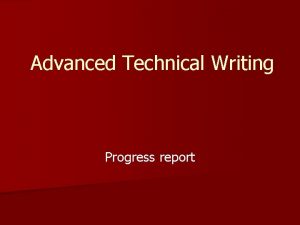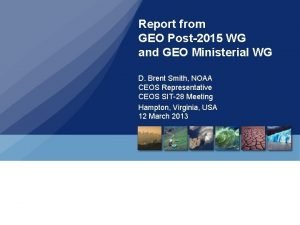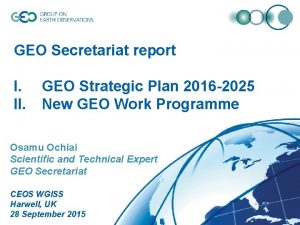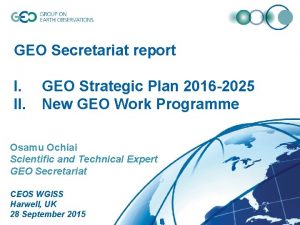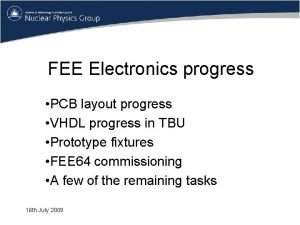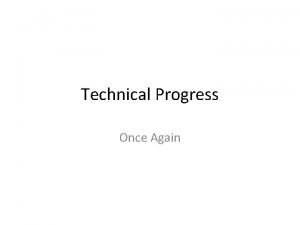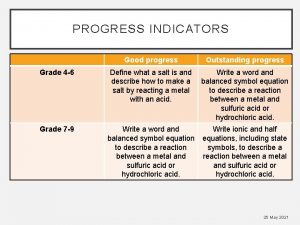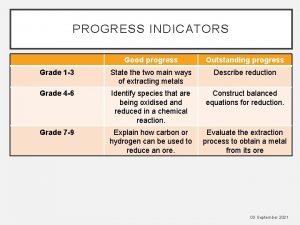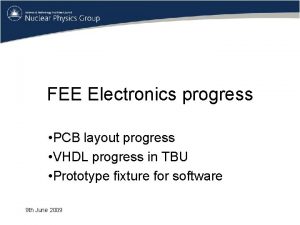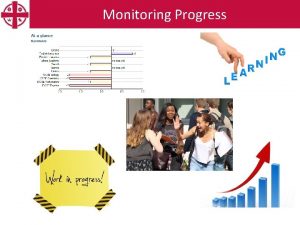Geo Sci ML a progress report Geo Sci









































- Slides: 41

Geo. Sci. ML - a progress report Geo. Sci. ML Interoperability Working Group

Agenda § Background § Recent progress § Demo § Experience from the testbed 2

Don’t you hate it when… § You can’t exchange geological data with your project partners because you use different systems? § You didn’t realise that the shapefile you downloaded last year has been superseded by an updated version? § You know there’s useful information out there, but you can’t find it? § You waste valuable time downloading and converting datasets § You cannot add real-time data from other sources to your information systems? § You keep emailing and burning CDs to publish your data to clients who need it urgently? § YOU NEED A WEB-DELIVERED DATA STANDARD!

Currently… Databases and digital maps with local data structures SGU USGS BRGM BGS Online GIS FTP WA GA Data sources Convert data Proprietary formats No ability to view others data in web client Joe Public Local data structures Shapefile SGu data Convert proprietary format Government Universities Shapefile BGS data Minerals industry Arc. IMS Arc Export NRC data NRC SA Download data Mapserver Mapinfo NTGS data Rationalise attribute data structure Resource management Petroleum industry Environment FTP Mapinfo GA data Web services

The challenge: data heterogeneity Heterogeneities System Use Different operating systems to store and process the data, vendor databases. Representational Different Formats (shape files, BLOB, binary, spatial data objects etc. ). Structural Different schema (table) structures.

Motivation - Interoperability “the ability of software and hardware on different machines from different vendors to share data” § availability of open geospatial technologies (OGC, ISO) § commitment to these standards Australia Asia Europe Poland France Denmark Czech Netherlands USA UK Germany Finland Sweden Canada North America Federal Japan Korea SA WA NT NSW Qld Victoria Tas.

Interoperability in Open. GIS interoperability semantic schematic Ontology (data content) Geo. Sci. ML (data structure) Geoscience Open. GIS syntax systems GML (data language) WFS, WMS, … (data systems)

Key Driver: Mineral Industry input highlighted § problems in gaining access to precompetitive geoscience information § described existing information as commonly incomplete and fragmented between gelogical surveys, each with its own information management systems and structures § noted that the disparate systems lead to inefficiencies causing higher costs, reduced effectiveness and increased risk incurred by the industry and its service providers

A short history of some geological data standards… In USA and Canada… North American Data Model (1996 -present) - a comprehensive geological model - conceptual, theoretical, difficult to implement In Australia… GGIPAC data modelling committee - National Geological Data Model (NGDM v. 1, 2004) - logical model, more structured than NADM - not comprehensive, never fully implemented

History BGS and GSC convened an informal meeting in Edinburgh in November 2003 to discuss problem Attended by representatives of geological surveys from: UK, Canada, US, France, Germany, Netherlands, Australia (CSIRO), Sweden, Japan, Czech Republic, Poland, Ireland, Finland…. . General agreement on need to address problem

Objectives Meeting agreed to set up task groups to: Develop a conceptual geoscience data model Map this to an interchange format Develop a testbed to prove / demonstrate use of the interchange format Assess vocabulary requirements

Scope Initial scope agreed to be: Information shown on geological maps Boreholes

Organisation IUGS-CGI had been recently set up and it was agreed the initiative would be a working group under the CGI Participants drawn from organisations willing to participate as no funding!!

Current active participants CSIRO Natural Resources Canada BRGM British Geological Survey USGS Arizona State Geological Survey Geoscience Australia Victoria State Geological Survey SGU Geological Survey of Japan

Approach Develop a conceptual data model and from this derive logical data model in UML Map this to XML for interchange using OGC GML standard – a geoscience exchange language Geo. Sci. ML Draw on previous work § Existing geoscience data models in particular NADM § XMML Use OGC WMS/WFS for delivery

Modelling methodology • Design using UML class diagrams • • use strict profile of UML, compatible with GML meta-model & mapping rules Prove it with Code • • Hand-code sample instance documents according to UML-GML mapping rules – iterate Generate XML Schema (GML Application Schema) • by hand following ISO 19136 rules or • automatically from UML (via XMI) using Shape. Change application Refer to: § ISO TS 19103 – Geographic Information: Conceptual Schema Language § ISO 19109 – Geographic Information: Rules for Application Schema § ISO DIS 19136 – Geography Markup Language v 3. 2 § XMML TWiki: UML-GML mapping rules & UML 2 GMLAS procedure

First steps Meeting convened in Perth in December 2004 to assess existing data models and begin development of logical data model In parallel Testbed 1 developed by BGS & BRGM for demonstration at IGC Florence in 2004 using boreholes in Channel Tunnel area CSIRO Twiki used for online collaboration

Next steps Presentations on progress & objectives made at IAMG Toronto in August 2005 Further meeting convened in Ottawa after this to progress model Agreed to develop a Testbed 2 for demonstration at IAMG Liege in September 2006 Agreed use cases for testbed Data model consolidated and emphasis on delivery

Geo. Sci. ML Working Group § Canada: Eric Boisvert, Boyan Brodaric (GSC) § UK: Tim Duffy, Marcus Sen, John Laxton (BGS) § USA: Bruce Johnson (USGS), Steve Richard (Arizona) § France: Jean-Jacques Serrano, Dominique Janjou, Christian Bellier, Francois Robida (BRGM) § Sweden: Lars Stolen, Jonas Holmberg, Thomas Lindberg (SGU) § Australia: Simon Cox (CSIRO), Bruce Simons, Alistair Ritchie (Geo. Science Victoria) Ollie Raymond, Lesley Wyborn, Dale Percival (Geoscience Australia) Geo. Sci. ML ‘Champions’ Ian Jackson (UK), John Broome (Canada), Kristine Asch (Germany)

What is Geo. Sci. ML? 1. Geological Data Model § § § scientifically robust structured attribute data based on existing models UML schema version 1. 1 Geologic units § lithological units Earth Materials § rocks Structures § contacts, faults Vocabularies § lookup tables, authority tables

What is Geo. Sci. ML? 2. GML encoding § extension of XML § builds on GML (Geographic Markup Language), XMML, and other standard schema

What is Geo. Sci. ML? GML Links to other modelling (Geography Markup Language) languages O&M (Observations & Measurements) XMML Boreholes Geo. Sci. ML (Geoscience Markup Language)

Geo. Sci. ML Testbed 2 architecture Databases, digital maps with local data structures Map local data structures to Geo. Sci. ML data structure Ionic Geo. Sci. ML Sweden Arc. IMS Cocoon Geo. Sci. ML USA Mapserver Cocoon Geo. Sci. ML Arc. IMS Cocoon Geo. Sci. ML UK Geoserver Geo. Sci. ML GA Geoserver Geo. Sci. ML Mapserver Geo. Sci. ML France Canada Data sources Display, query, download BRGM client (Ionic) GSC client (Phoenix) Web services Desktop client (eg: Gaia) GA client (IMF) Web clients

A goal for Surveys… from this Databases and digital maps with local data structures SGU USGS BRGM BGS Online GIS FTP WA GA Data sources Convert data Proprietary formats No ability to view another state’s data in web client Joe Public Local data structures Shapefile SGU data Convert proprietary format Government Universities Shapefile USGS data Minerals industry Arc. IMS Arc Export BGS data NRC SA Download data Mapserver Mapinfo NTGS data Rationalise attribute data structure Resource management Petroleum industry Environment FTP Mapinfo GA data Web services

… to this Databases, digital maps with local data structures Map local data structures to Geo. Sci. ML Display, query, download SGU USGS Joe Public Ionic Geo. Sci. ML Federal client (IMF) BRGM Universities Arc. IMS Geo. Sci. ML survey clients (Arc. IMS) BGS NRC SA Geoserver Geo. Sci. ML Mapserver Geo. Sci. ML Minerals industry Resource management Desktop clients (Gaia, Arc. Map) WA Petroleum industry Environment GA Data sources Government Web services Web clients

Progress to date Achievements ü Geo. Sci. ML 1. x defined (but not documented) ü Testbed 1 implemented (2 countries, 2 sites) ü Testbed 2 implemented (6 countries, 8 sites) FGeo. Sci. ML 2. 0 in progress, will be finalized late 2007 L i. M c S conceptual model: no GML o e G logical model: GML-UML <Lithodemic. Unit gml: id="GSV 53"> <gml: description>Granite, syenite, volcanogenic sandstone, conglomerate, minor trachyte lava</gml: description> <gml: name>Mount Leinster Igneous Complex</gml: name> <purpose>typical. Norm</purpose> <age> <Geologic. Age> <value> <CGI_Term. Range> <lower> <CGI_Term. Value> <value code. Space="http: //www. iugscgi. org/geologic. Age. Vocabulary">Triassic</value> </CGI_Term. Value> </lower> <upper> <CGI_Term. Value> <value code. Space="http: //www. iugscgi. org/geologic. Age. Vocabulary">Triassic</value> </CGI_Term. Value> </upper> </CGI_Term. Range> </value> <event> <CGI_Term. Value> <value code. Space="http: //www. iugsphysical model: GML-XML cgi. org/geologic. Age. Event. Vocabulary">intrusion</value> 1. 1

Were we are now Mapped Features § units, structures Geo. Sci. ML v 1. 1 (testbed) Legend ~ NADM model, GML encoding § unit description § stratigraphic column, other classifications Geo. Sci. ML v 2 § Geologic timescales Borehole data Field observations & measurements § structure measurements, material descriptions Lab measurements § geochem, geochronology ~ XMML, BGS, BRGM OGC sensor-web

Where we are now Successful development of Testbed 2 – although clear pushing current technology to limit Demonstration at IAMG 06 created wider interest in participation (in use rather than development) Geo. Sci. ML still very much in development

What needs to be done (1) Organised more formally to allow more organisations to participate and move to production system

CGI Interoperability Working Group 1. Request Feature Interoperability Working Group Geo. Sci. ML Service Deployment Group Interest Community (IC) Geo. Sci. ML 2. 0 Design Task Group Geo. Sci. ML Test Bed Task Group Geo. Sci. ML Service Architecture Task Group 2. Deliver Specification 3. Review comment 4. Change Request

CGI Interoperability Working Group • Steering Committee • Use-cases and Requirements task group • Geo. Sci. ML Design task group • Service Architecture task group • Implementation Testbed task group • Outreach and technical assistance task group • Geoscience Concept Definitions task group

Implementation Testbed task group Successor to the Test. Bed 2 task group. Chair: Tim Duffy BGS ("project manager") Members: Alistair Ritchie, Eric Boisvert, Jean Jacques Serrano, Dale Percival, Jonas Holmberg, others nominated by participating geological surveys Tasks: analyse Geo. Sci. ML v 2 Use. Cases and liaise with Geo. Sci. ML Design and Service. Architecture? task groups to ensure that requirements are satisfied Coordinate and deliver Test. Bed 3 demonstrating the Geo. Sci. ML v 2 use -cases End date: Demo at IGC, August 2008, Oslo

What needs to be done (2) Produce documentation § Formal documentation of Geo. Sci. ML as ‘Standard’ § Cookbooks § Management overview Data model needs to be extended, in particular to include observation data in order to exchange a useful amount of information

What needs to be done (3) Develop vocabularies - at present structure standard but not content § Geoscience ontologies Functionality of WMS/WFS implementation needs to be enhanced § OGC standards ahead of implementation technology § Working with a range of implementation options

Liaision and Outreach § OGC Best Practice § National Standards § Reference documents to INSPIRE drafting teams § Eurogeosurveys § GIS Industry (ESRI, SAFE Software) § Mining industry § One. Geology

Use case 1: - load a web service - display a map - query a single feature - return attributes in Geo. Sci. ML Use case 2: - query a group of map features - download features in Geo. Sci. ML format Use case 3: - reclassify (colour) map features based on Geo. Sci. ML attributes Use case 4: - select a set of geologic unit mapped features on the basis of age or lithology and highlight them

Web servers in 6 countries • Canada, USA, Sweden ESRI Arc. IMS, Map. Server, Oracle platforms Cocoon wrapper to handle queries and XML transformations • UK, Australia Geo. Server (open source) serving data from Arc. SDE and Oracle sources • France Ionic Red. Spider WMS server and client custom development for WFS

Web clients • Canada Phoenix • France Ionic Red. Spider • includes client for borehole data • Australia Moximedia IMF (prototype for limited use cases) Generic desktop clients eg: Gaia for testing purposes

Client in Canada (Phoenix)


Questions? For further information on Geo. Sci. ML: https: //www. seegrid. csiro. au/twiki/bin/view/CGIModel/Geo. Sci. ML
 Difference between status report and progress report
Difference between status report and progress report Physical progress and financial progress
Physical progress and financial progress Crf software
Crf software Mpr monthly progress report format
Mpr monthly progress report format Tceq p2 annual progress report
Tceq p2 annual progress report Fyp presentation slides
Fyp presentation slides Example of progress report in technical writing
Example of progress report in technical writing Seo progress report
Seo progress report Dissertation progress report yale
Dissertation progress report yale Progress report for internship
Progress report for internship How to report project progress
How to report project progress Progress report example
Progress report example Memorandum to supervisor
Memorandum to supervisor Growing success chart
Growing success chart Progress report for ecd
Progress report for ecd Sperling 1960
Sperling 1960 Sci-edge abstracts
Sci-edge abstracts Mando unificado sci
Mando unificado sci Encv
Encv Si suffix chart
Si suffix chart Cogsci c131
Cogsci c131 Qsci 381
Qsci 381 Spi vs sci
Spi vs sci Biology 3220z
Biology 3220z Kevin uart
Kevin uart Sci 230
Sci 230 Sci elo
Sci elo Risolvere problemi con equazioni
Risolvere problemi con equazioni Sci란
Sci란 Math sci
Math sci Umass poli sci
Umass poli sci Sci-fi
Sci-fi Sci
Sci Stranger genre
Stranger genre Characteristics of science fiction genre
Characteristics of science fiction genre Definition of science fiction genre
Definition of science fiction genre Zakladatelia sci fi
Zakladatelia sci fi Sci gateway
Sci gateway Journal of nanoscience and nanotechnology sci
Journal of nanoscience and nanotechnology sci Comp sci 301 uw madison
Comp sci 301 uw madison Steven day rit
Steven day rit Phil sci
Phil sci


